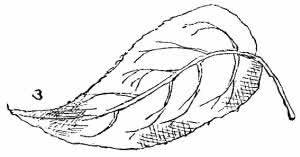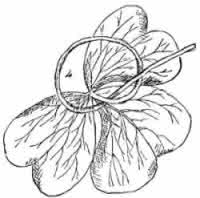The March 16, 1880 issue of Harper’s Young People covered a topic that is amenable to publication in The New Leaf Journal. Harper’s Young People, a nineteenth century children’s magazine, covered various topics of interest to children. One of these topics was drawing. For this particular issue of the magazine, Harper’s covered how to draw leaves. While my drawing ability is mostly limited to crooked stick figures, I do appreciate good drawing much like I appreciate leaves. For this reason, I thought that it was worth sharing the Harper’s leaf drawing tutorial and examples here in the pages of our humble online magazine.
Harper’s cautioned that while drawing leaves may seem easy, “there must be care, patience, and faithful effort.” The young student who masters drawing leaves “will go on to flower drawing, which is more difficult, but very delightful…”
The author of the article recommended that young artists begin with simple leaves – and provided four hand-drawn examples to start with (see below):




The author advised young artists to draw these leaves over and over again. As simple as the leaves may be, the author opined that “a whole page of fuchsia leaves of different sizes is very pretty, and so of any leaf.” Moreover, “[b]y a skillful hand they may be arranged with artistic grace.”
I conclude this post by re-printing the author’s specific guidance for pencil sketches of leaves:
Attention to a few points will give a precision and interest to the drawing. Let the drawing be lightly rather than heavily done. Learn to draw the double lines of stems and veins with great correctness. Make a darker line on the under edge of leaves, and on one side of the stems. By turning the leaf on the wrong side the veins can be distinctly seen, and easily drawn. Do not be discouraged, but persevere. Begin to-morrow, or to-day: these beginnings may help you to become a skillful sketcher, and will give to you a delightful occupation that will grow dearer to your heart every day of your life.
While this careful guidance may not be enough to steady by maladroit hand, perhaps it will serve as some inspiration to some of our more artistically-inclined readers to take up the drawing of leaves as a pasttime.